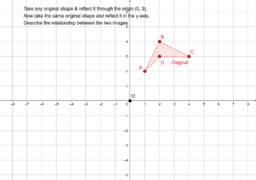
To find our lines of symmetry, we must divide our figure into symmetrical halves. Let's look at a typical ACT line of symmetry problem. This line, about which the object is reflected, is called the "line of symmetry." Any point or shape can be reflected across the x-axis, the y-axis, or any other line, invisible or visible. So if you’ve got a solid grasp of all your foundational math topics (or you just really, really like coordinate geometry), then lets talk reflections, rotations, and translations!Ī reflection in the coordinate plane is just like a reflection in a mirror. Remember, each question is worth the same amount of points, so it is better that you can answer three or four questions on integers, triangles, or slopes than to answer one question on rotations. If you’re shooting for a perfect or nearly perfect score and want to make sure you have all your bases covered, then this is the guide for you.īut if you still need to brush up on your fundamentals, then your focus will be better spent on studying the more common types of math problems you’ll see on the test. Reflection, rotation, and translation problems are fairly rare on the ACT, only appearing once per test, if at all. This will be your complete guide to rotations, reflections, and translations of points, shapes, and graphs on the ACT-what these terms mean, the types of questions you’ll see on the test, and the tips and formulas you’ll need to solve these questions in no time.

And, often enough, you’ll be asked to do so on the ACT.

Reflections, rotations, translations, oh my! Whether you’re dealing with points or complete shapes on the coordinate plane, you can spin 'em, flip 'em, or move 'em around to your heart’s content.


 0 kommentar(er)
0 kommentar(er)
